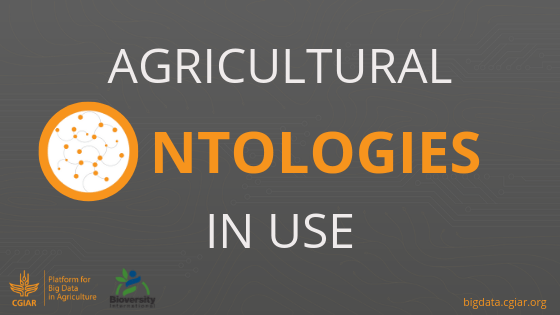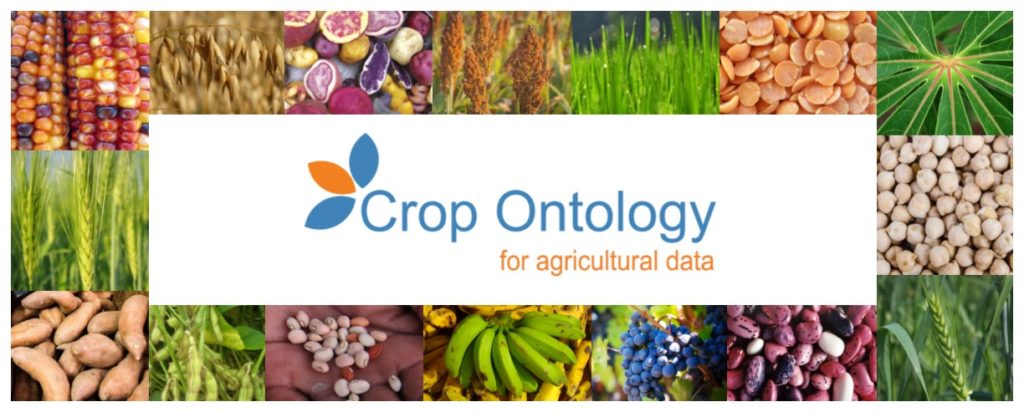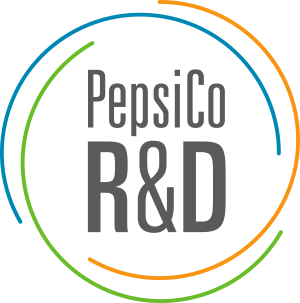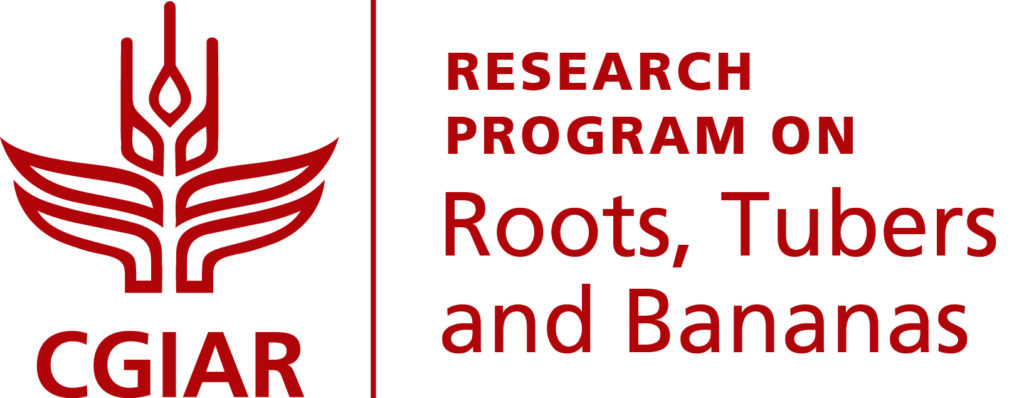Agricultural Ontologies in Use: New Crops and Traits in the Crop Ontology
The Ontologies Community of Practice is engaged in the development of ontologies for agricultural research. In a series of blog posts, we’ll take a look at ongoing ontologies projects and developments.
About the active community behind the application ontology
Crop Ontology (CO) is the elder ontology developed by CGIAR and used alongside the Gene Ontology and Trait Ontology. The CGIAR breeding community created the CO in 2008 as a necessary source of traits and variables for the breeding platforms such as the Integrated Breeding Platform (IBP) and the breeding databases for roots, tubers and bananas.
Each CGIAR Center maintains the CO of their mandate crops. Partners like Cornell University, INRA, CIRAD or NacRI among others, have joined the effort and used the Crop Ontology Template to create content for their crops. By providing descriptions of agronomic, morphological, physiological, quality, post-harvest, abiotic and biotic stress traits, the CO enables digital data aggregation and comparison across projects and locations.
All traits of the CO are progressively mapped to the reference and species-neutral Trait Ontology (TO) maintained by Oregon State University. The mappings are available on Planteome’s website, and they enable users to search for a trait without consideration for the species. This is useful for studies in comparative genomics or for grouping traits for a family or a clade (e.g. legumes). The Ontology Look Up Service maintained by the EMBL/European Bioinformatics Institute (EBI) provides search on the traits of the CO. The CO is also available on Agroportal.
About the Crop Ontology and its construction
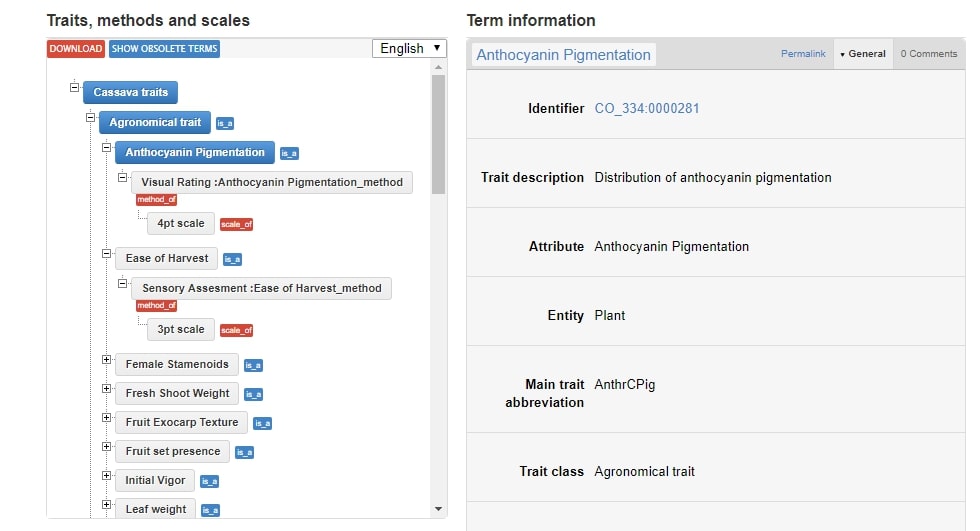
A portion of the cassava ontology.
To date, the CO contains 4,125 traits and 5,556 variables for 29 species, with new additions of the faba bean ontology by ICARDA and cotton ontology by the CottonGen database. Within the past year, new traits have been added for barley, banana, cassava, groundnut, potato, sweet potato, wheat, and yam. Additionally, the sunflower trait ontology, compiled by the University of British Columbia, Canada, will soon be available.
A specific effort is made to add farmers’ crop trait preferences for the roots, tubers and bananas ontologies and to propose specific field book formatting to capture farmers’ feedback. This was accomplished through tailored scoring methods, tallying votes, and comparing other varieties and landraces. The challenge is to design the traits and their scoring in the same way that farmers express them and make it interpretable by breeders.
Additionally, the CO takes gendered crop trait preferences into account. Women’s preferences for given crop traits are well captured and it is assured that they remain visible in the analysis of the Participatory Varietal Selection results.
As a whole, the aim is to describe traits that are important to communities and that simultaneously allows scientists to integrate the traits in a breeding product profile.
Update from the Entreprise side: the Oat Ontology
PepsiCo Inc., owners of Quaker Oats, conducts breeding trials in many countries, including the US, Canada and UK to identify varieties that consistently yield oats rich in heart-healthy compounds in the face of changing climates and locales, in addition to sustaining farm income and to mill efficiently into finished products. Management of data from these trials and operations requires consistent use of standardized vocabulary, units and data relationships.
PepsiCo sought an ontology that covered these important aspects of crop breeding, growth and operations but quickly found one didn’t exist. In conjunction with their collaborators at NIAB (National Institute of Agricultural Botany, Cambridge UK), PepsiCo has created a new oat ontology following the example of many other crops in Crop Ontology. Rather than keeping their new ontology proprietary, they reached out to their mutual GEMS partner, Bioversity, and have been working closely with Marie-Angelique Laporte to incorporate this new ontology into Crop Ontology so that all working with oats have the opportunity to utilize consistent nomenclature and standards.
Looking forward
Next year, a large set of post-harvest and quality traits on nutrients composition and food products from roots, tubers and bananas generated by the RTBFoods project will be integrated. The traits and variables will be aligned with the preferences of food processors and consumers, as well as with sensory traits described by informal and formal sensory panels and from near-infrared spectrum analysis.
Users can contribute to the roots, tubers and bananas ontologies by submitting new variables or commenta via the revised term submission form developed by the Boyce Thompson Institute and Bioversity International.
Moreover, the Planteome Github allows users to request new traits for any Crop Ontology.
The team of curators can be contacted here by clicking on CONTRIBUTE (working groups) and then “See CGIAR Crop Ontology Curators.”
October 10, 2019
Elizabeth Arnaud
Ontologies Community of Practice Lead
Bioversity International
Latest news

